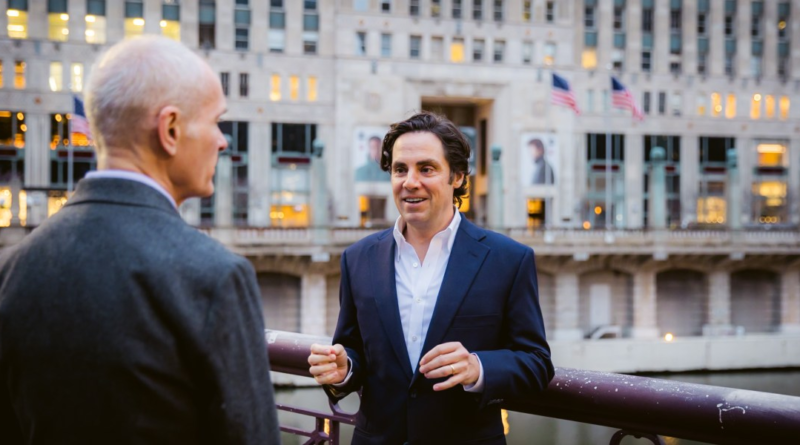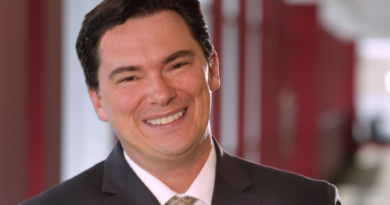2 generations, 1 corner office: 20 years separate Harris Poll co-CEOS, but millennial boss says there’s more common ground with boomers than you’d expect
You don’t have to search far to see that the workforce is divided, with baby boomers complaining that young people just don’t “bust their behinds” quite like their generation had to. Meanwhile, Gen Z and millennials are over being called lazy when their prospect of getting on the property ladder is significantly dimmer than generations before them—no matter how much work they put in.
But the multigenerational pair of CEOs atop the famous Harris Poll, which was founded by John F. Kennedy’s pollster Lou Harris, shows that the media and pollsters may be guilty of overstating generational divides.
They also show a route to managing a multi-generational workforce in times of ever-increasing political and economic tensions that often threaten to split generations of workers apart.
2 generations, 1 corner office
When Will Johnson took the helm of the Harris Poll, he knew that he would be co-steering the company with John Gerzema—an experienced executive who at 63 years old has two decades on Johnson.
While Johnson sits on the cusp between millennial and Gen X, his boss falls firmly in the baby boomer category.
But despite the documented differences between the two generations, the stark age gap doesn’t faze Johnson.
“We get along great,” Johnson says, adding that regardless of age the duo balance out each other’s strengths and weaknesses.
Being dyslexic, for example, means that Johnson struggles with his spelling but says that developing talent is his superpower.
“He’s way more in with trends,” Johnson jokes. “So in a lot of ways, I’m the older one and he’s younger which is fun.”
Plus, there’s more common ground between each generation than you’d expect, he tells Fortune.
Shaking people out of normal conventions
“People are way closer together than you would see by looking at the top lines,” he says. “If you get beneath the surface, there’s far more nuance to how people are feeling… We see that people want to get along with one another, they want to be connected with one another.”
Harris Poll has put this theory to the test.
Take Johnson’s hometown, Chicago, for example, where violence is up and divisiveness between the left and the right is growing.
When residents were polled on their sentiments around the staggering statistic that there’s a 10-year gap in life expectancy between Black and white Chicagoans, they instantly showed solidarity, Johnson says.
“You put that question to people across all spectrums, all ages, all races and you see a huge majority say, that’s a problem, we need to solve that,” he says.
“It gets people out of this partisan lens—it’s almost people are way closer together, but you have to shake them out of the normal conventions of how they’re looking at things.”
Essentially, there may be macro differences between each generation—like attitudes towards workplace flexibility and what’s an appropriate outfit to wear to work—but when it comes to bigger picture issues like the health of the planet, the importance of equality and happiness, we are all on the same page.
“There’s this kind of middle common ground of understanding, there’s a yearning that cuts across all spectrums for some common ground and consensus,” he concludes.
Finding middle ground
Of course, Johnson and Gerzema don’t always see eye-to-eye.
Whenever they disagree, Johnson says the best way to find middle ground is by stepping away from the argument, putting yourself in their shoes, and trying to understand where the other is coming from.
“I always find that giving them a bit of time is valuable to clarify,” he says—and visa versa.
“If you feel like you’ve done that—you’ve pulled yourself back, you’ve removed your ego from the decision, you’ve tried to put yourself in their point of view and then you come back to it—you can usually find common ground,” he adds. “Having that mutual respect for one another is key.”
The same ethos can be applied when managing a multigenerational workforce.
Although there are currently five generations of workers, research shows that Gen Z and millennial workers feel unheard by older managers meanwhile, workers over 50 often feel like the odds are stacked against them.
It’s why, as Johnson says, it’s not enough to just have representation in the room. Leaders must also ensure that every voice at the table feels valued.
“It’s having all those different backgrounds and different ages represented and then really having a respect and a genuine curiosity about those different points of view and what they’re bringing, and a feeling that that is a real competitive advantage,” he adds.
Leaders may, understandably, worry that encouraging workers to open up and bring their true opinions might be inviting disagreements.
But it might just be the key to creating some consensus among workers who have grown up experiencing vastly different versions of the world.
“If everyone comes to discussions with respect for one another and from a perspective of empathy in trying to understand where the other person is coming from, I think that discourse on anything—things even as sensitive and serious as the Israel-Hamas conflict—is healthy,” Johnson says.
It won’t guarantee your baby boomer workers will suddenly be on the same page with Gen Z new hires, but he adds: “Everyone seems to learn something and it does create a closer connection.”




